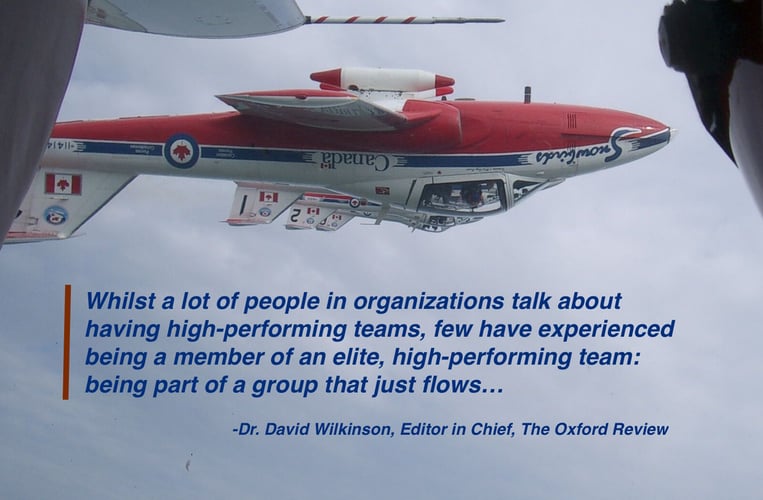“It is hard to survive in the jungle when you have been trained in a zoo.”
Sonja Blignaut
Organisations invest a lot of money in leadership development programs that, while well-meaning, ultimately create leaders who struggle to apply their new knowledge and skills in the real world. The primary reason for this is that the programs are delivered in the ordered, comfortable environment of the classroom; the case studies and behaviour-based approaches used are entirely isolated from the rest of the organisation.
It is, to re-use a metaphor by our colleague Sonja Blignaut, akin to taking a zoo-based approach to the management of animals. Patterns of life in the zoo are predictable and repetitive. Animals are fed at specific times, enclosures are cleaned, and species are kept separated. Over time, they become domesticated.
Leaders, similarly, have been taught to think and behave differently, but have no experience or training in how to interact outside of the safety of the cage; they lack situational awareness and adaptive capacity.
The rather serious problem is that, as most people know, you can’t just release zoo animals into the wild and expect them to survive; they do not know how to compete for resources, avoid predators or catch prey. Inevitably, therefore, they soon die.
The business world is a lot more like the jungle than the zoo.
Where do leaders come from?
The word is a relatively recent invention; it was not widely used before the late eighteenth century. At that time, society shifted from the unquestioned authority of kings, queens and feudal lords, to a more function-based relationship between elected officials, factory owners, and what one might call the common people. A new word was needed to describe this novel relationship.
Of course, language evolves as words are put into new contexts, and constantly interpreted and re-interpreted. Unsurprisingly, so also was the case for leadership, as a brief trip back through time reveals.
The birthright
The trait theory
-
Honesty
-
An ability to be forward looking
-
An ability to be inspiring
-
Courage
-
Straightforwardness
-
Intelligence
-
A fair mind
Individuals displaying these traits would emerge as leaders; the cream would rise to the top. Unfortunately for trait theory, it was debunked in the 1940’s when research found that no single trait or group of traits was correlated with leadership.
The behavioural paradigm
Under this paradigm, researchers would identify a set of typical behaviours found in seemingly effective leaders, or a set of differences in behaviours between poor leaders and effective leaders; aspiring leaders could then be taught to emulate the “correct” behaviours and improve their leadership. Subsequent leader behaviour could also be assessed against this newly minted “best practice” and corrective action be taken.
The simplistic model of leadership that followed was one easily codified, copied and repeated. It also enabled leadership training to be delivered in the classroom by people with little to no real-world experience. This represented a huge benefit in terms of efficiency and cost, which in turn meant that consultants loved it. As a result, the corporate world experienced a rapid rise in the market for leadership training. All companies had to do was to follow the recipe. Behavioural approaches to leadership turned into the conventional wisdom.
Soon, however, organisations started to realise that a single leader’s behaviour didn’t occur independently of group behaviours, nor did it cause a particular group behaviour in a uniform and predictable way. The problem was, and unfortunately remains, that conventional wisdom moves at a pace much slower than that of empirical evidence - and this was been proven true yet again, somewhat unsurprisingly given how many made (and still make) money from behaviour-based programs. Indeed, despite the apparent lack of practical usefulness, a large number of organisations still anchor their training on the behavioural paradigm to this day, fully “supported” by the consulting community.
Culture and transformation
In this paradigm, the task of the leader was to establish a clear vision and mission for the organisation, and then focus their attention on empowering individuals and teams to achieve them. Leadership was a function of inspiration, charisma and proactive decision-making.
In fairness, there is merit to this paradigm of leadership in that it acknowledges that leaders cannot directly influence the organisation through their social status, decrees, traits or behaviours. Rather, they may do so by setting expectations, managing constraints, and acting to amplify positive outcomes and mitigate negative outcomes.
Unfortunately, though, most aspiring leaders are also taught to plan and lead in a way that ultimately traps them in the zoo. They lack the situational awareness needed to be adaptive and responsive. As Sonja once wrote, we have “ended up with siloed organisations filled with complacent, cynical and disengaged employees who have become “domesticated” to such an extent that they simply do what they’re told or what they’re measured on. This may have been acceptable when people weren’t expected to bring their creative selves to work and mostly had to engage in routine work; but now, in a world where automation and AI are replacing these kinds of roles, it simply won’t do. In this so-called creative economy, we need inspired, creative and thoughtful employees. We need people who are situationally aware, able to spot risks and opportunities and make wise decisions.”
The most common traps
-
The Slide Deck Experts
As noted above, people who teach leadership often lack the relevant practical experience. But while anyone could teach the theory of bike riding if they had the appropriate slide deck, no one ever learned to ride a bike in the classroom from understanding the relevant physics. Even though the training is delivered in a coherent and confident way, aspiring leaders therefore inevitably struggle to apply the domesticated zoo version of leadership theory in the jungle of the real world.
This is true even though the programmes have been developed by “experts” and delivered by people trained in facilitation so long as they lack any real experience in the application of the theory. A tell-tale sign is the one size fits all approaches that have little room for detecting and responding to context; the success of the program is measured by the retention of the knowledge as opposed to the application of the skills.
-
The ex-
There are also those who do have real world experience, but often lack context. The best example is the proliferation of ex-military leadership trainers who, through years of working with subordinates over whom they hold immense power, have come to believe that they are anointed with special leadership qualities - and that these qualities can be distilled and sold through an intensive leadership program.
Oftentimes, these “leaders” cannot shift the context away from their previous military experience. When I was an officer in the army, as a bomb disposal expert, if I gave a lawful order, it was literally illegal for a subordinate to refuse to follow it; that I was the youngest and least experienced member of our platoon did not matter. It would be easy for my ego to confuse begrudging compliance with motivational leadership.
Leading with this kind of immense directness might have be useful if the tasks were clear, and the outcomes were safe and predictable. Our context was different. When we were conducting bulk demolitions involving tonnes of high explosives, there could be a dozen or more soldiers preparing the demolition site. Any one of us could make a small mistake that would kill everyone. So, I had to cultivate a leadership style that kept the soldiers focused on the task but provided the psychological safety necessary for even the most junior soldier to be able to point out potential problems, raise concerns and ask questions. Unquestioning compliance could be deadly.
The military is, in other words, a really good place to learn leadership, but copying what works in one context and expecting it to work in another is dangerous. Leaders need to understand how to navigate changing contexts and adapt their style to suit.
-
Hero worship
Leadership inspiration can easily turn into hero worship. We all know of leaders who were thought of as saviours, conquerors, and winners (most of us also know leaders who would like to thought of as such), but one must be careful not to fall victim to halo effects and confuse great results with great leadership; luck has a part to play, but context is far more important.
The term charismatic leadership is relevant. A solid non-leadership example is the hero worship of Warren Buffett, the chairman and CEO of investment company Berkshire Hathaway. There is a huge amount of information, fact and fiction available on the internet about what Warren Buffett does or does not to in order to grow his wealth. Has copying his approach led to a proliferation of billionaires? No. Buffett is undoubtedly a very skilled investor, but copying his methods without understanding that the context of his journey is unique and non-repeatable is unlikely to lead to success. Statistically speaking, you are far more likely to go bankrupt than reach even close to his level of wealth.
Copying heroic leadership harks back to the “great man” era. You can celebrate their success, but you can’t copy their journey.
What to do instead
As a result, people such as JP and myself developed adaptive strategy to provide the organisational infrastructure needed to be adaptive and responsive to change. Activation of an adaptive strategy means that leaders need to learn the skills that allow them to survive in the jungle. The adaptive strategic approach is premised on a view of leadership that isn’t constrained by the conventional wisdom.
Instead, we take the scientifically established view that leadership is an emergent property of the interactions between people and systems. Behaviours, intentions and traits play a part, as does the situation; it is all dynamic. At AGLX, we teach complexity thinking as part of the adaptive leadership approach. Leaders need to understand how to shift their response based on the context of the situation and lead in the moment.
Certainly, universal principles may exist (though one should stress that principles and precise instructions are two different things). One often hears organisations talk about specific leadership situations such as safety leadership, leading change, leading culture, project leadership, etc. In adaptive strategic leadership, we think about these situations as substrates on which leaders get to practice, learn and develop their leadership skills. The notion that safety leadership is different from leading change may be good if you are selling safety and change programmes, but in reality, these are just different opportunities to utilise the same foundation. The context and technical skills needed are different, but the principles of leadership remain constant.
Understanding the underlying principles and their supporting science properly enables the starting point of contextual adaptation, after which experience may be built. To illustrate, a chef has a deep understanding of food, taste, heat, and so on, and can use this to create unique recipes or substitute ingredients depending on what is available. A recipe book follower has precise instructions, but no capacity to adapt if an ingredient or utensil turns out to be missing.
The key lies in application. It has to. And as such, all that which leadership encompasses cannot be learned in the classroom.
So, at the end of the proverbial day, whether you are teaching leadership or looking to take a course, remember that one cannot train animals in a zoo and then release them into the wild. Theory matters, but the most important thing is to implement it in practice; to figure out what is relevant to the context and how to adapt. To live in the jungle that is the corporate reality.
Ultimately, even though the same or similar principles may apply, everyone’s leadership journey is unique.
Ready to move beyond traditional leadership paradigms and equip your leaders for the complexity of today's business jungle? Let’s have a conversation about how our Adaptive Leadership and Strategy framework can help you develop leaders who thrive in uncertainty. Book a call with us today and start your journey toward building resilient, adaptive teams that are prepared to lead in the real world.




